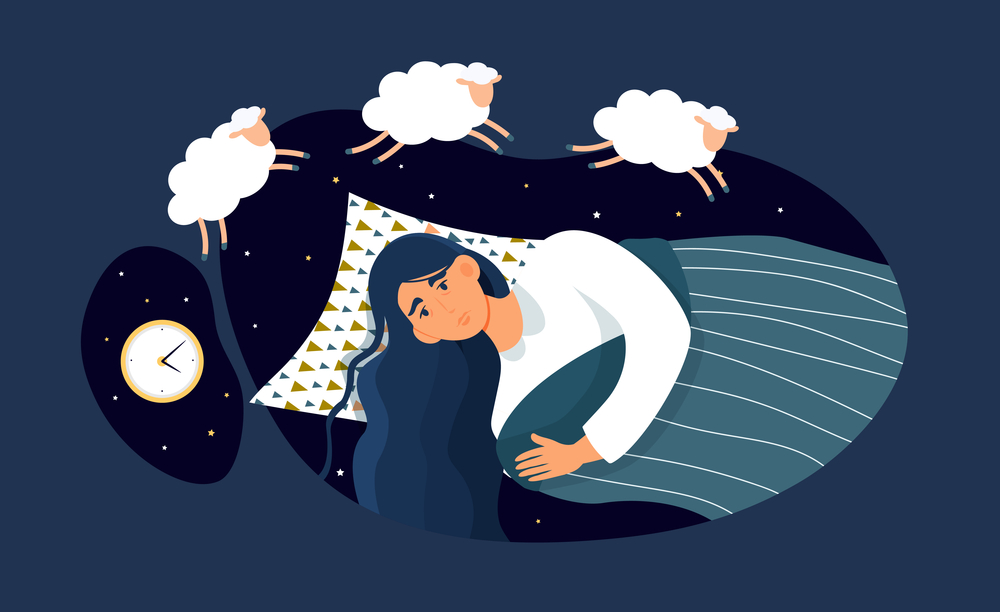Abstract
Cognitive Behavioral Therapy for Insomnia (CBT-I) is the most effective non-pharmacological intervention for chronic sleep difficulties. This article introduces a structured, evidence-based, and experiential CBT-I protocol adapted for clinical practice. It combines stimulus control, sleep restriction therapy, cognitive restructuring, and relaxation training with a patient-centered approach that builds insight and empowerment. Drawing on sleep science, clinical research, and practical implementation, the article outlines the first three core sessions in CBT-I, provides a clinical rationale for each component, and presents case examples to support fidelity and creativity in delivery.
Keywords
CBT-I, Insomnia, Sleep Restriction, Stimulus Control, Cognitive Therapy, Sleep Hygiene, Behavioral Therapy, Evidence-Based Practice
Introduction
Insomnia affects approximately 10–30% of adults worldwide, with significant impacts on mood, cognition, physical health, and overall functioning (Morin et al., 2006; Bhaskar et al., 2022). While sleep medications may provide short-term relief, long-term reliance can lead to tolerance, dependency, and diminished quality of sleep. CBT-I is now the first-line treatment for chronic insomnia according to the American Academy of Sleep Medicine (AASM, 2021). This article presents a practical and experiential implementation of CBT-I designed for real-world clinical settings and built on decades of sleep research.
Method and Framework
CBT-I integrates cognitive, behavioral, and physiological strategies to reduce sleep latency, minimize nighttime awakenings, and improve overall sleep quality. The core techniques include:
- Stimulus control
- Sleep restriction therapy
- Cognitive restructuring of sleep-related beliefs
- Relaxation training and mindfulness
- Sleep hygiene education
Sessions are sequenced to gradually shift maladaptive patterns, address underlying anxiety, and promote self-regulated sleep rhythms.
Session-by-Session Application
Week 1: Sleep Education and Sleep Diary Tracking
Clients are introduced to the science of sleep: sleep cycles, circadian rhythms, and the difference between sleep quantity and sleep quality. They complete a sleep diary tracking bedtime, wake time, sleep onset latency, total sleep time, and nighttime awakenings. Psychoeducation includes myths about sleep (e.g., ‘I need 8 hours or I’ll be dysfunctional’) and emphasizes behavioral consistency over perfection.
Week 2: Stimulus Control and Sleep Scheduling
Clients begin stimulus control techniques to rebuild the bed-sleep association:
- Go to bed only when sleepy
- Get out of bed if unable to sleep for 20 minutes
- Use the bed only for sleep (and sex)
- Wake at the same time daily
A fixed wake time is established, and sleep windows are tracked. Sleep efficiency is introduced as a key metric (Total Sleep Time / Time in Bed).
Week 3: Sleep Restriction and Cognitive Restructuring
Using the sleep diary, the client’s average total sleep time is calculated. A sleep window is assigned that matches this average (e.g., 5.5 hours), not to reduce sleep but to increase sleep drive and consolidate rest. Sleep restriction improves efficiency by minimizing time spent in bed awake. Cognitive distortions such as catastrophizing (‘If I don’t sleep, I’ll lose my job’) are identified and challenged using a structured CBT framework.
Discussion
CBT-I’s strength lies in its balance between structured interventions and individualized application. Many clients are initially skeptical of sleep restriction or stimulus control, but when applied with empathy and education, reluctance transforms into insight. These first three sessions set the foundation for sustained change, challenging unhelpful habits and beliefs while activating new behavioral pathways toward restorative sleep.
Conclusion
Insomnia is both a symptom and a self-reinforcing pattern. CBT-I offers a powerful alternative to sedatives by addressing the underlying cognitive, behavioral, and physiological mechanisms. When delivered experientially, it equips individuals to reclaim agency over their sleep and their health. The first three sessions initiate a process of reconnection—between the body, the environment, and the mind at rest.
References
- Morin, C. M., Culbert, J. P., & Schwartz, S. M. (2006). Nonpharmacological interventions for insomnia: A meta-analysis of treatment efficacy. American Journal of Psychiatry, 153(10), 1361–1370.
- Bhaskar, S., Hemavathy, D., & Prasad, S. (2022). Prevalence of chronic insomnia in adult patients and its correlation with medical comorbidities. Journal of Family Medicine and Primary Care, 11(1), 26–31.
- Edinger, J. D., & Means, M. K. (2005). Cognitive–behavioral therapy for primary insomnia. Clinical Psychology Review, 25(5), 539–558.
- American Academy of Sleep Medicine. (2021). Clinical Practice Guideline for the Pharmacologic Treatment of Chronic Insomnia in Adults.
Download the scholarly version of this article by clicking HERE

